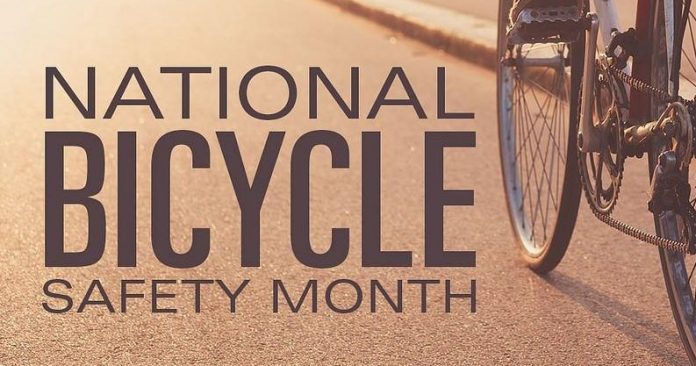With the warming of the seasons and all of us getting closer and closer to the official start of Summer in June, the Missouri State Highway Patrol is urging the public to be cautious on the roadway, concerning the increase in traffic that comes along with warmer days. This specifically pertains to bikes and motorcycles, as well as May being the official month for both Bicycle and Motorcycle Safety Awareness.
According to the MSHP’s release, 2023 preliminary statistics indicate that there were over 2,400 crashes involving motorcycles, and that eight individuals were killed last year riding bikes. That being said, it’s important not only for other drivers to be aware of these smaller vehicles, but it’s important for their operator to understand the law regarding specifics for both bikes and motorcycles.
For those who ride atop either of these modes of transport, remember to dress for safety, and maintain high visibility while riding; it’s imperative other drivers know your location on or around the road at all times.
The Highway Patrol has issued a release on good practice regarding both vehicles, and we’ll report the important below.
For BIKES:
§ Make sure your bicycle is in good working condition. Check it before each ride.
§ Although not required by state law, wearing a bicycle helmet while riding is one of the most important things you can do to protect yourself. Be sure your helmet is the proper size and adjust the straps for a snug fit.
§ Never carry passengers.
§ Walk your bike across busy intersections.
§ Don’t hitch rides on other vehicles.
§ Give pedestrians the right-of-way.
§ Use a horn or bell to warn those who may not see you.
§ Don’t perform stunts on streets or sidewalks.
§ Keep both hands on the handlebars except when signaling.
§ Wear light-colored or reflective clothing when riding after dark.
§ Keep your bicycle in good condition.
§ Always ride with caution and courtesy.
§ When riding a bicycle on a sidewalk, yield the right-of-way to any pedestrian and give audible signals before overtaking or passing a pedestrian.
Please pay attention whether you’re driving a vehicle or riding a bicycle. Understand and obey the law and make safety a priority. Reviewing bicycle safety guidelines and traffic laws is a great way to prepare for the bicycling season.
For MOTORCYCLES:
* Be visible. Motorists often have a hard time seeing you. Keep your headlights on, day or night. Use reflective strips/decals on your clothing and on your motorcycle. Be aware of other vehicles’ blind spots.
*Dress for safety. Wear a helmet and eye protection. Wear bright clothing. Wear thick or leather clothing for protection.
*Think safety while riding. Give yourself space to react to other motorists’ actions. Use lane positioning to increase visibility. Watch for turning vehicles. Signal your next action in advance. Pretend you’re invisible and drive defensively.
*Know your bike. Get formal training and take refresher courses. Practice riding your motorcycle before going into heavy traffic. Know how to handle your motorcycle in all types of road conditions.
Review the laws pertaining to operating a motorcycle on Missouri roadways.
* You must possess a valid license that shows you have successfully passed an examination for the operation of a motorcycle or motortricycle to operate one upon any highway of this state.
* Any qualified motorcycle operator who is 26 years of age or older may operate a motorcycle or motortricycle upon any highway of this state without wearing protective headgear. This is allowed only if the motorcycle operator maintains proof of financial responsibility in accordance with Chapter 303 RSMo and is covered by a health insurance policy or other form of insurance which will provide the person with medical benefits for injuries incurred as a result of a traffic crash while operating or riding on a motorcycle or motortricycle.
* Motorcyclists are required to follow the same traffic laws as motor vehicle operators.
Car and truck drivers need to share the road with motorcyclists and keep the following in mind:
* Drivers should actively watch for motorcyclists.
* Motorcycles may look farther away than they are due to their smaller size. It is also difficult to judge the speed at which a motorcycle is traveling as it approaches.
*Motorcycles are hidden easily in a vehicle’s blind spots, or masked by objects or backgrounds. Thoroughly check traffic before changing lanes!
*Motorcyclists may slow down by downshifting or easing off the throttle. So, you may not see a brake light. Allow extra distance between your vehicle and a motorcycle.
*A motorcycle’s turn signal does not cancel after the turn like a vehicle’s signal does. The motorcycle may not be turning, so pay attention.
*A motorcyclist will often adjust their position in the lane so they can see more easily or to avoid debris, wind, or passing vehicles. Allow the motorcyclist to share the lane; don’t assume they are being reckless.
*Stopping distance for motorcycles is similar to that of cars. But, slippery pavement can make stopping quickly difficult. Please allow more distance behind a motorcycle in these types of road conditions.






